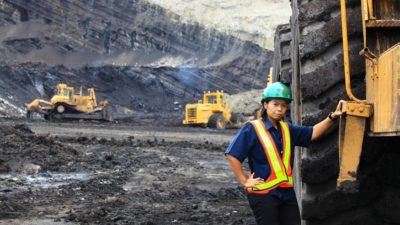The iron ore price has ticked up another 4.4% from last Friday's levels to trade at US$102.85 per tonne.
That will be welcome news to investors in S&P/ASX 200 Index (ASX: XJO) mining stocks like Fortescue Ltd (ASX: FMG), BHP Group Ltd (ASX: BHP), and Rio Tinto Ltd (ASX: RIO).
As you're likely aware, the iron ore price has tumbled in 2024. The steel-making metal was trading for US$144 per tonne in early January, only to slide below US$90 per tonne at the beginning of last week.
Much of that pressure has come amid lower demand from China.
The nation's economy and steel-hungry real estate sector have been stuck in low gear, putting the government's 5% growth target at risk and sending the BHP share price, along with Rio Tinto and Fortescue shares, sharply lower this year.
After failing to reignite the economy with some modest stimulus measures, last week, the People's Bank of China (PBoC) upped the ante and excited markets by lowering the reserve requirements for Chinese banks by 0.50% and reducing down payment requirements on existing mortgages by the same amount.
Chinese officials also spurred enthusiasm by signalling that additional stimulus measures may be in the pipeline.
This saw the iron ore price hit US$100 per tonne by last Friday. At the current US$102.85, the industrial metal is up more than 14% over the past week.
Here's how the big three ASX 200 iron ore miners performed last week:
- BHP shares closed up 13.4%
- Fortescue shares closed up 15.8%
- Rio Tinto shares closed up 13.9%
So, is the rally in ASX 200 mining stocks back on?
Why Goldman Sachs is forecasting a big retrace in the iron ore price
According to the analysts at Goldman Sachs, that answer is a likely no.
At least, not yet.
According to Goldman Sachs commodities analyst Aurelia Waltham (courtesy of The Australian Financial Review), the iron ore price is receiving a boost not just from last week's Chinese stimulus but also from a buildup in inventories in the middle kingdom.
"While we see upside risk to our price forecast from potential additional stimulus announcements, we still expect iron ore prices to fall to US$85 a tonne," she said of the broker's fourth-quarter forecast.
That would bring the price down more than 17% from current levels, likely throwing the rally in ASX 200 mining stocks like BHP, Rio Tinto and Fortescue in reverse.
And the additional stimulus flagged by Chinese officials last week isn't likely to change that outlook.
"Even following the pledge to launch more forceful stimulus measures in [the] Politburo meeting, our China economists continue to see limited upside to their 2024 growth forecast and two-side risks to their 2025 growth forecast," Waltham said.
She also noted that higher prices are likely to lead to higher supplies at a time when the market is already looking oversupplied.
"Meanwhile, this week's rally is likely to delay cuts to iron ore supply which, without much stronger hot metal output, we believe are needed to prevent the market going into a deeper surplus," she said. "We hold a muted outlook for Chinese domestic steel demand over the remainder of this year and in 2025, particularly for long steel."
According to Waltham (quoted by the AFR):
While policies such as reducing the minimum downpayment and lowering existing mortgage rates are focused on reviving the struggling property sector – which has contributed to the about 20% drop in long steel demand this year, following a 9% year-over-year decline in 2023 – our China property team believe these policies are likely to yield limited impact, with more funding needed to stabilise the sector.
Additional, strong stimulus moves from the Chinese government could see the iron ore price run ahead of Goldman Sachs' forecasts, which would come as welcome news to shareholders in ASX 200 miners like BHP, Rio Tinto and Fortescue.
But Waltham doesn't foresee this as the base case here.
She said:
However, unless this ultimately flows through to improving steel demand and substantially stronger hot metal output (which is not currently the base case), we still see a growing surplus in the fourth quarter as difficult to avoid, with current prices delaying the supply cuts required from price-responsive producers, such as India.









